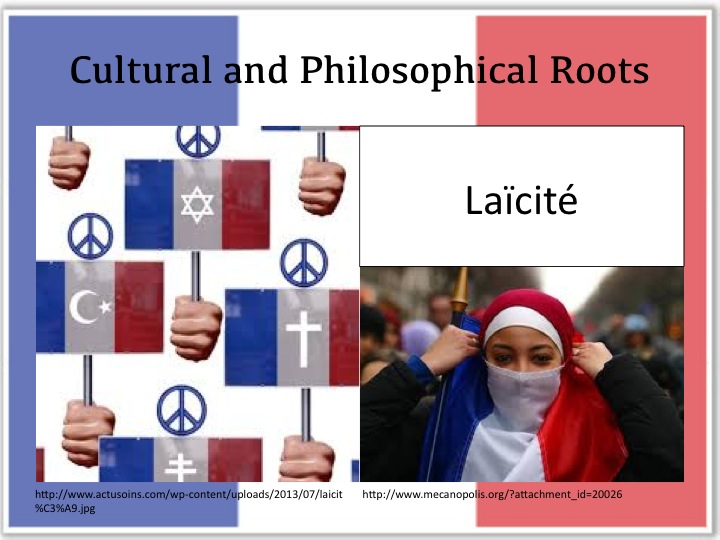Major Influences on the French Education System
 Equality, along with liberty and brotherhood, is one of one of the founding principles of the French Republic. As such French law, enshrined in the 1958 Constitution, prohibits discrimination on the grounds of race, sex (or gender), religion, age, or disability (Hogan & Hartson, 2007).
Equality, along with liberty and brotherhood, is one of one of the founding principles of the French Republic. As such French law, enshrined in the 1958 Constitution, prohibits discrimination on the grounds of race, sex (or gender), religion, age, or disability (Hogan & Hartson, 2007).
In France, males and females have the same legal access to education, though females tend to have somewhat superior educational outcomes compared to their male counterparts. Today, at the conclusion of their education, 48% of females who have entered the education system have earned a higher education diploma compared to 37% of males. Most surprising though is that only 11% of females leave the school system without any level of diploma, while a full 20% of males do (Ministère de l’Education, 2013a).
The current French educational system is characterized by a centralized, uniform and highly state regulated system. The National Ministry of Education is the largest employer in the country, as every teacher is a civil servant. University professors and researchers are also paid by the state (Community of Knowledge on Arts and Cultural Education in Europe, 2013). Like much of Europe, this national system provides free education at every level and advancement in this educational system is conditional upon the  successful completion of comprehensive exams.
successful completion of comprehensive exams.
The French education system has always been central to national identity creation in France. Before the Revolution, education was used to build France’s Catholic religious identity and loyalty to the monarchy. The French language itself was not spoken by the majority of French citizens until a king made it mandatory, in order to build a sense of national unity. After the Revolution it continued to serve the Republic as a means of creating of citizenship and shaping national identity (Gutek, 2006).
France’s particular brand of institutionalized secularism is referred to as “laïcité”. The “ideal of laïcité is to prevent the abuse of power by any established interest to curtail people’s choice of worldview or their freedom to enjoy their own way of life” (Williams 2011, p. 186). This concept has been interpreted in many different ways over the years, but most often as either a laïcité of separation which is strongly anti-clerical, and therefore anti-religious or a laïcité of neutrality which defends religious diversity and freedom of all by not favoring any religion or worldview (Massignon, 2011).
 Today, the National Ministry of Education defines laïcité in terms of respect and equity, a laïcité of neutrality approach. “The respect for the beliefs of pupils and their parents means the absence of religious teaching in the syllabus – which does not prevent the teaching about religion – and the banning of proselytism” (Éduscol, 2013). After years of debate, in 2002, the French began teaching what is referred to as “facts of religion” or “religion as a human phenomenon,” in schools as educators were realizing students were losing historical, geopolitical and cultural context in schools. This is not done, however, through the inclusion of a class on religion but through engagement of religious themes as they are encountered in the existing curriculum (Williams 2011).
Today, the National Ministry of Education defines laïcité in terms of respect and equity, a laïcité of neutrality approach. “The respect for the beliefs of pupils and their parents means the absence of religious teaching in the syllabus – which does not prevent the teaching about religion – and the banning of proselytism” (Éduscol, 2013). After years of debate, in 2002, the French began teaching what is referred to as “facts of religion” or “religion as a human phenomenon,” in schools as educators were realizing students were losing historical, geopolitical and cultural context in schools. This is not done, however, through the inclusion of a class on religion but through engagement of religious themes as they are encountered in the existing curriculum (Williams 2011).


